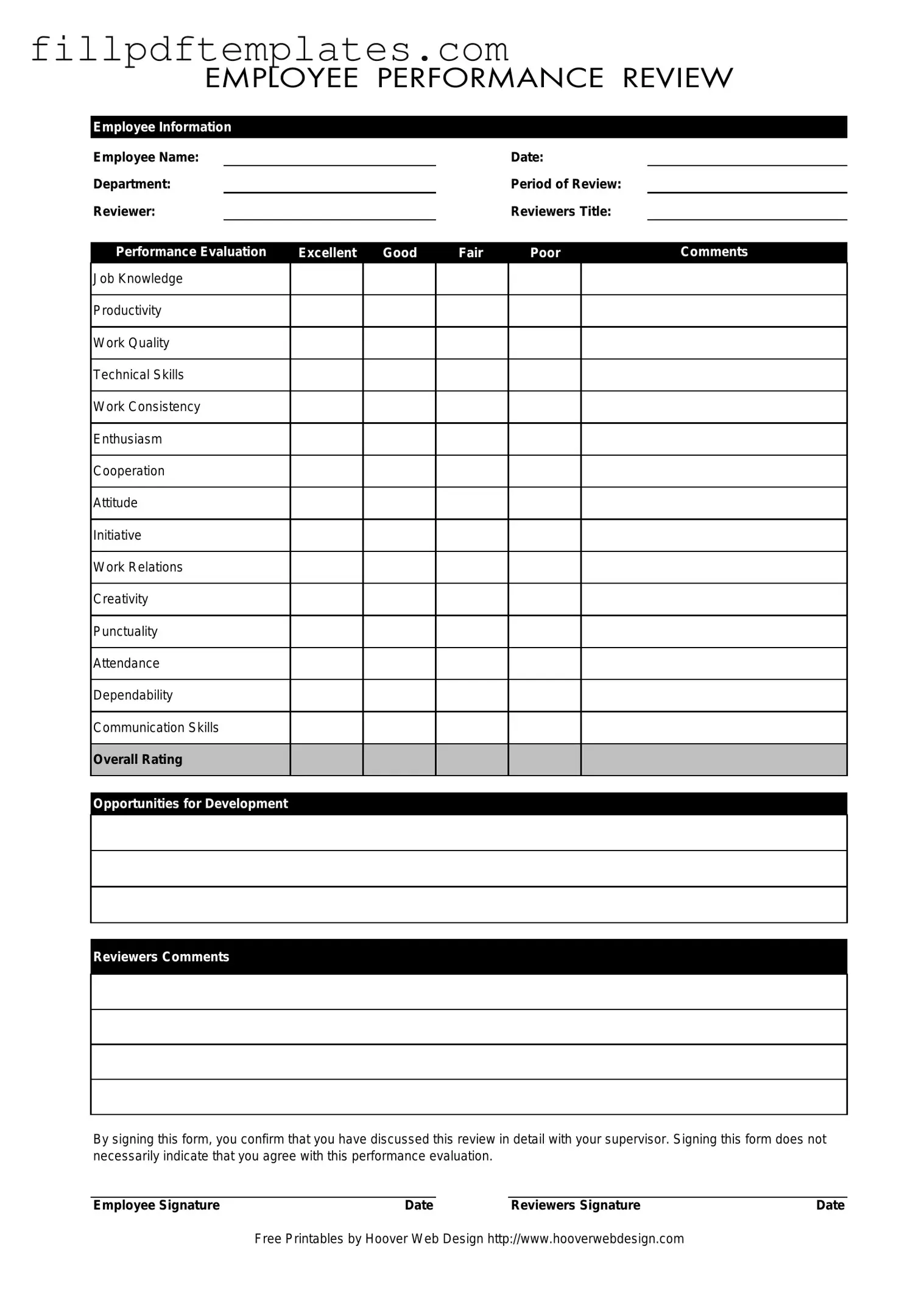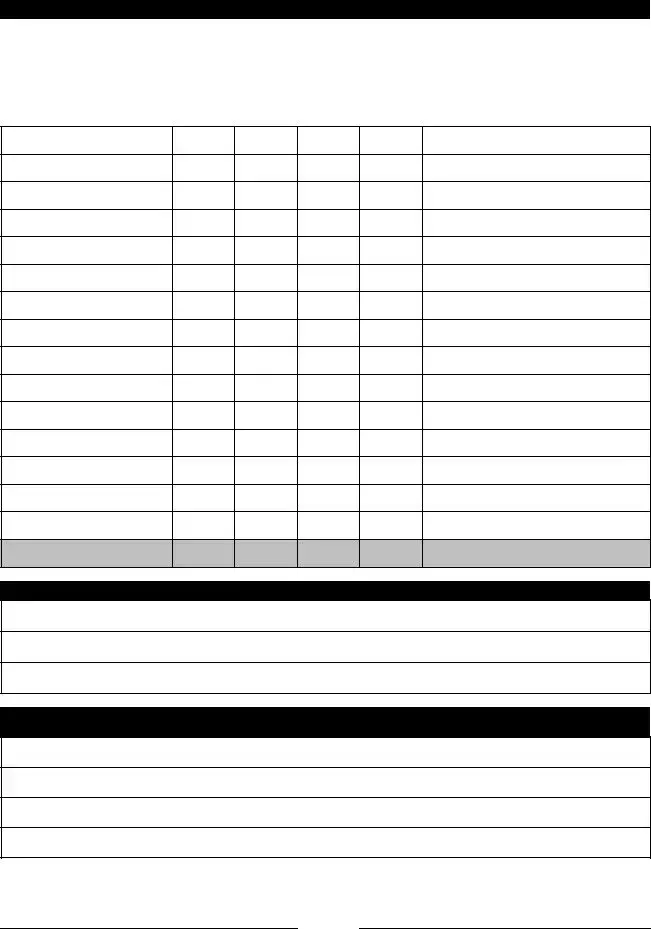The Employee form serves as a crucial tool in the performance evaluation process within organizations, facilitating a structured assessment of an employee's contributions and areas for improvement. It captures essential employee information such as name, department, and the period under review, ensuring that evaluations are both relevant and timely. The form is designed to provide a comprehensive overview of various performance metrics, including job knowledge, productivity, and communication skills, which are rated on a scale from excellent to poor. Additionally, it allows for qualitative feedback through comments on specific competencies like creativity, punctuality, and teamwork. The inclusion of opportunities for development highlights the organization's commitment to employee growth, while the signature section emphasizes the importance of dialogue between the employee and the reviewer. This form not only serves as a record of performance but also fosters a collaborative approach to professional development, ensuring that employees are engaged in the evaluation process.

